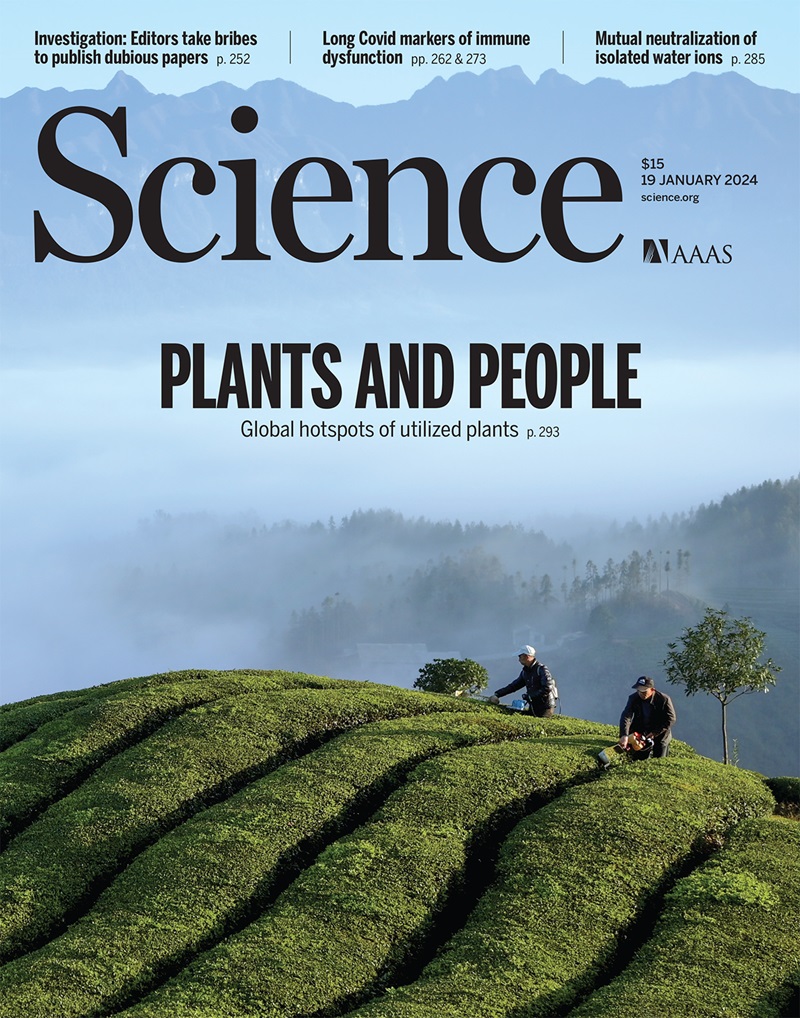Computational design of serine hydrolases
IF 44.7
1区 综合性期刊
Q1 MULTIDISCIPLINARY SCIENCES
引用次数: 0
Abstract
The design of enzymes with complex active sites that mediate multistep reactions remains an outstanding challenge. With serine hydrolases as a model system, we combined the generative capabilities of RFdiffusion with an ensemble generation method for assessing active site preorganization at each step in the reaction to design enzymes starting from minimal active site descriptions. Experimental characterization revealed catalytic efficiencies (kcat/Km) up to 2.2 × 105 M−1 s−1 and crystal structures that closely match the design models (Cα root mean square deviations <1 angstrom). Selection for structural compatibility across the reaction coordinate enabled identification of new catalysts remove with five different folds distinct from those of natural serine hydrolases. Our de novo approach provides insight into the geometric basis of catalysis and a roadmap for designing enzymes that catalyze multistep transformations.

丝氨酸水解酶的计算设计
设计具有复杂活性位点介导多步反应的酶仍然是一个突出的挑战。以丝氨酸水解酶为模型系统,我们将rf扩散的生成能力与用于评估活性位点预组织的集成生成方法相结合,从最小活性位点描述开始设计酶。实验表征表明,催化效率(k cat / k m)高达2.2x10 5 m−1 s−1,晶体结构与设计模型(Cα RMSDs <;1)。通过选择反应坐标上的结构相容性,可以在低通量筛选中鉴定出具有与天然丝氨酸水解酶不同的五种不同褶皱的新催化剂。我们的新方法提供了对催化的几何基础的洞察和设计催化多步骤转化的酶的路线图。
本文章由计算机程序翻译,如有差异,请以英文原文为准。
求助全文
约1分钟内获得全文
求助全文
来源期刊

Science
综合性期刊-综合性期刊
CiteScore
61.10
自引率
0.90%
发文量
0
审稿时长
2.1 months
期刊介绍:
Science is a leading outlet for scientific news, commentary, and cutting-edge research. Through its print and online incarnations, Science reaches an estimated worldwide readership of more than one million. Science’s authorship is global too, and its articles consistently rank among the world's most cited research.
Science serves as a forum for discussion of important issues related to the advancement of science by publishing material on which a consensus has been reached as well as including the presentation of minority or conflicting points of view. Accordingly, all articles published in Science—including editorials, news and comment, and book reviews—are signed and reflect the individual views of the authors and not official points of view adopted by AAAS or the institutions with which the authors are affiliated.
Science seeks to publish those papers that are most influential in their fields or across fields and that will significantly advance scientific understanding. Selected papers should present novel and broadly important data, syntheses, or concepts. They should merit recognition by the wider scientific community and general public provided by publication in Science, beyond that provided by specialty journals. Science welcomes submissions from all fields of science and from any source. The editors are committed to the prompt evaluation and publication of submitted papers while upholding high standards that support reproducibility of published research. Science is published weekly; selected papers are published online ahead of print.
 求助内容:
求助内容: 应助结果提醒方式:
应助结果提醒方式:


